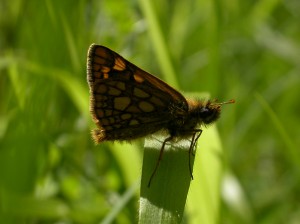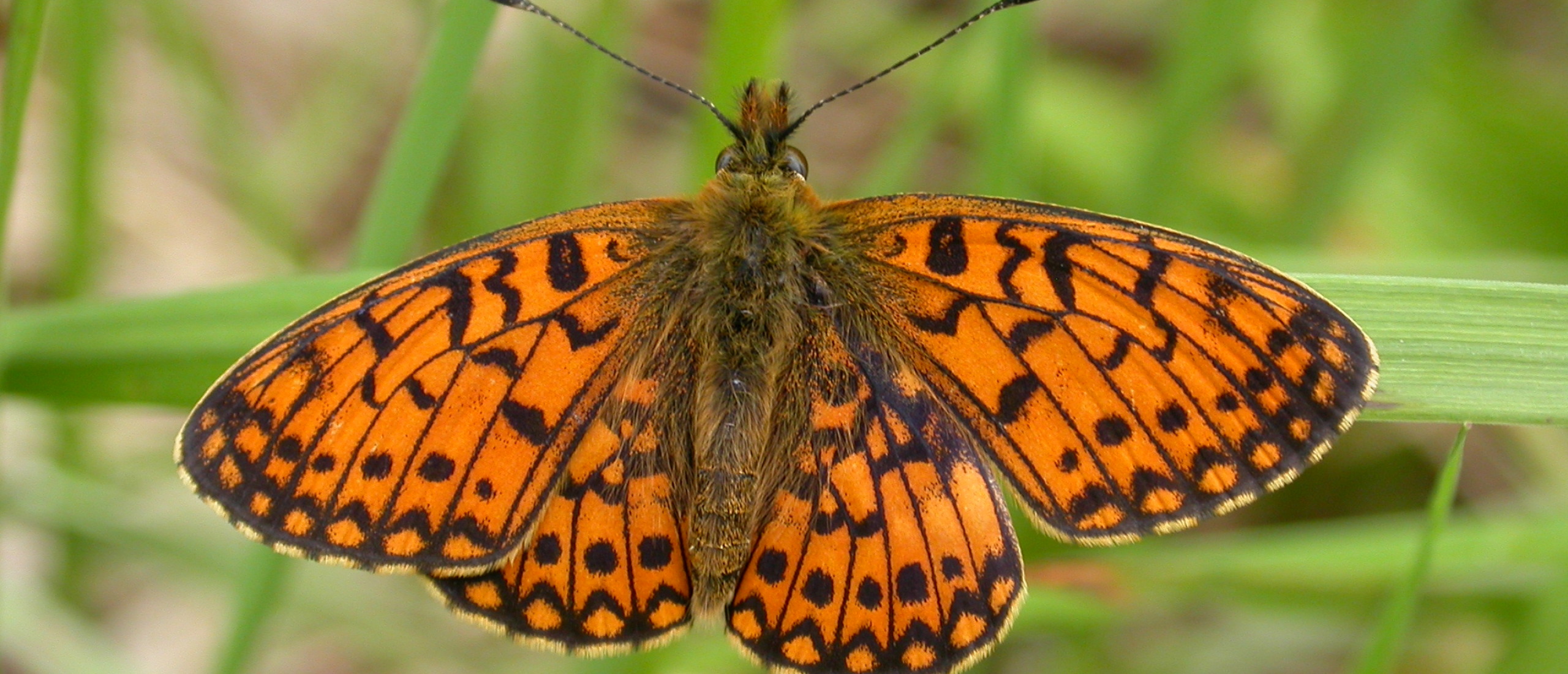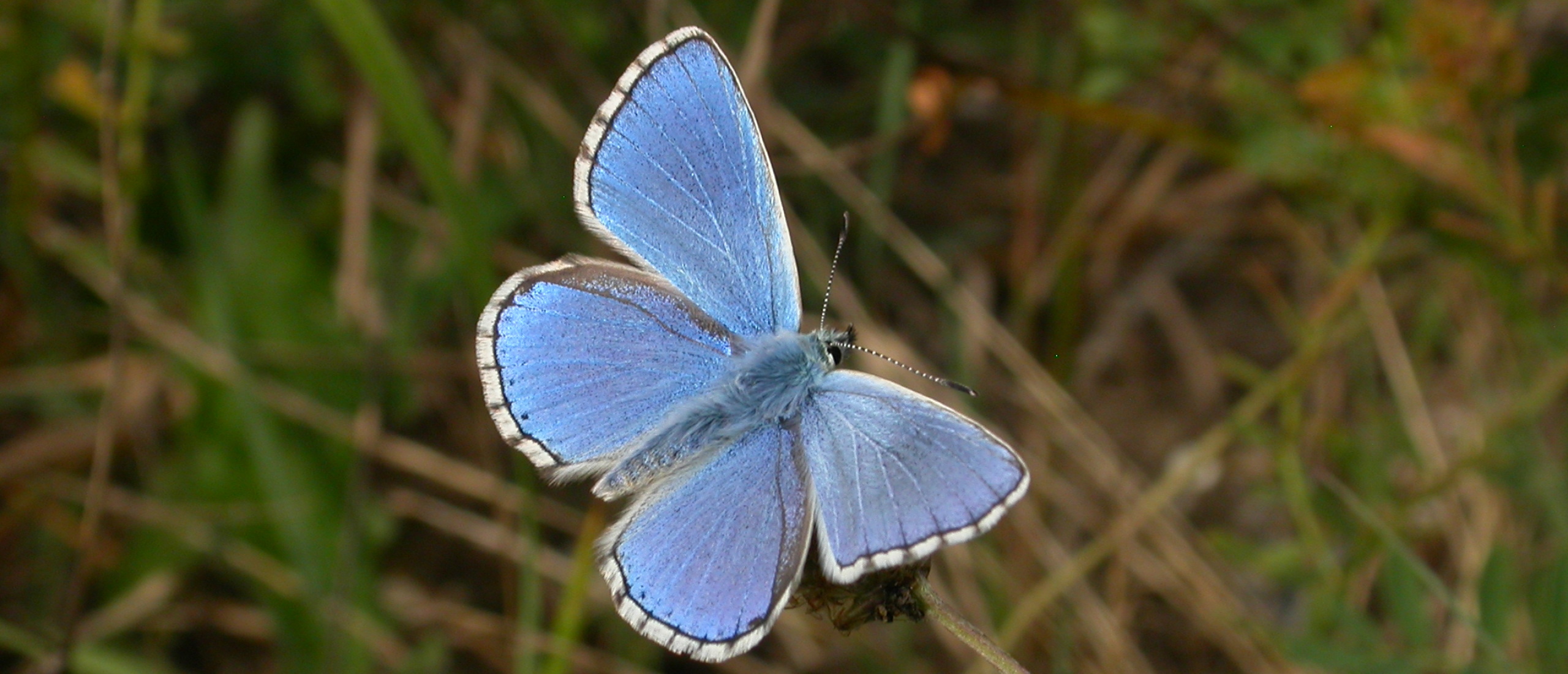
Spring had sprung - but then Winter returned with a vengeance The title of my previous post, on 8th May, "Spring has finally sprung" was sadly to be premature in the extreme. After that, Winter returned, with unseasonably cold, wet, windy weather predominating, and I added no butterflies at all in what should normally be one of the most exciting periods of the butterfly year, with all the Spring fliers emerging in a rush. Finally, after all this waiting, yesterday I was able to make some progress towards catching up on some of the missing species. It was a gloriously sunny day, cold at first but rapidly warming up as the day went on. I visited several of my favourite haunts in northern France and southern Belgium, a mix of forest and chalk grassland, providing a wide range of habitat types. My first stop was a long ride in a large forest, where the weather was still cold at 10.00 AM, but after much searching, I did find one Grizzled Skipper, Pyrgus malvae, which was not new for my annual list, and just as I was about to move on, I almost stumbled across a perfect, newly-emerged Pearl-bordered Fritillary, Clossiana euphrosyne, attempting to warm itself in the icy wind. This species would normally have already been on the wing 15 days ago, but this year everything is running late.
 A newly-emerged Pearl-bordered Fritillary, Clossiana euphrosyne
A newly-emerged Pearl-bordered Fritillary, Clossiana euphrosyne
Leaving this large forest behind, I headed eastwards towards the Belgian border, stopping at an area of chalky grassland still just in France, where I hardly saw anything, adding only Small White, Pieris rapae, and Small Heath, Coenonympha pamphilus, to my list, until I finally found one male Duke of Burgundy, Hamearis lucina, patrolling a sheltered glade in the sunshine. This place is a stronghold of this unusual species, the only European representative of a largely South American family. Formerly known as the Duke of Burgundy Fritillary because of its slightly fritillary-like markings, this butterfly is declining rapidly, and I can only hope that this was not the only member of its kind flying here this year.
 A lone male Duke of Burgundy, Hamearis lucina, soaking up all the sunshine he can get
A lone male Duke of Burgundy, Hamearis lucina, soaking up all the sunshine he can get
From here my route took me across the Belgian border, first to a chalky hillside above a quarry, where again very little was to be found, until finally I was treated to the magnificent sight of a Scarce Swallowtail, Iphiclides podalirius, patrolling over bushes of its foodplant, the Sloe. I attempted to photograph this splendid species, but it was having none of it, and would not sit down. While chasing it, however, I noticed a small, dull-looking greyish butterfly scuttering along the path in front of me, another new species for the year, Dingy Skipper, Erynnis tages. Returning to the car, I then drove a short distance to another of my favourite haunts, a large area of damp forest, where again little was to be seen at first. I walked along a trail, and finally saw one Pearl-bordered Fritillary, and a few Brimstones and Wood Whites, but just as I was about to turn back, I thought I would check a ditch just off the side of the track, and there, in precisely the same ditch as I had seen its ancestors many times before in previous years, was a beautiful male Chequered Skipper, Carterocephalus palaemon. It is extraordinary how successive generations of butterflies, who never meet their parents, can remain utterly faithful to the tiny area which their forefathers frequented.
 The male Chequered Skipper, faithful to his chosen site
The male Chequered Skipper, faithful to his chosen site
My next port of call was the same limestone hillside that I had visited earlier in May, and by this time the temperature had climbed to a reasonable warmth on this south-facing slope, though there was still a chill in the wind. Nonetheless, it was here that butterflies were really flying, with new species being Red-underwing Skipper, Spialia sertorius, and Brown Argus, Aricia agestis, as well as two more Scarce Swallowtails, a Swallowtail, at least ten Berger's Clouded Yellows, a Green Hairstreak, a few Violet Fritillaries, and several Brimstones, Wood Whites, Speckled Woods and Orange-tips.
 Red-underwing Skipper, Spialia sertorius
Red-underwing Skipper, Spialia sertorius
 Short-cropped chalky grassland, a paradise for butterflies
Short-cropped chalky grassland, a paradise for butterflies
Yesterday evening, following my butterfly-watching experience, I drove right across Belgium and into the Netherlands. Following my work in Nijmegen today, another bright sunny day, I stopped off at a new site near Ede, an example of what the Dutch refer to as "new nature". Formerly farmland, this area has been returned to a semi-natural state by having most of the topsoil artificially removed, allowing wildflowers to thrive on the sandy grassland. Here I was treated to the unusual sight of at least 15 Sooty Coppers, Lycaena tityrus, as well as one Small Copper, Lycaena phleas, and four Common Blues, Polyommatus icarus, my first of the year.
 A male Sooty Copper, Lycaena tityrus
A male Sooty Copper, Lycaena tityrus
Strangely enough, all the Sooty Coppers were males; males seem to outnumber females in many butterfly species. It was anyhow a cheering experience to see so many of what is by no means a common species, apparently thriving in a newly-created nature area. A pleasant conclusion to the last butterfly-watching day before I turn 50 tomorrow!
 The newly created "natural" area
The newly created "natural" area
Butterfly list as of 28th May: 28 species











